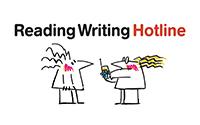In this short video, Jo Medlin, President of ACAL, and author of Reader Friendly Communication explains why the guide is broader than plain English and discusses three important parts to the guide
- understanding who your readers are,
- designing your message including layout and graphics and then
- looking at other ways to present your information to make it more accessible.
How do I use this guide? #
This is your quick guide to communicating more effectively with your readers (your audience).
We look at using plain language, but we also explore how you can understand your readers, the importance of design and presenting your information in different ways to reach as many people as possible.
This guide will tell you:
- How you will benefit from using a reader-friendly approach
- Why using plain language is important
- How to write effectively.
This guide also has:
- Case studies – how others have changed to a reader-friendly approach
- Links – to more information and help
- Ideas – to talk to others about the benefits of change.
To use the guide: #
- Read Part 1: Introduction and Part 2: Understanding – knowing your readers.
These will give you some general tips about being reader-friendly. They also give you some important background information that will help you make decisions,
Then
- Look through to find the parts you need. You can read the rest from start to end, or dip in and out as you need to.
What’s a text? We are using the word “text” to mean anything we need to read and understand. A street sign is a text, and so is a novel, an email, a phone message, and the menu board in your local café!


